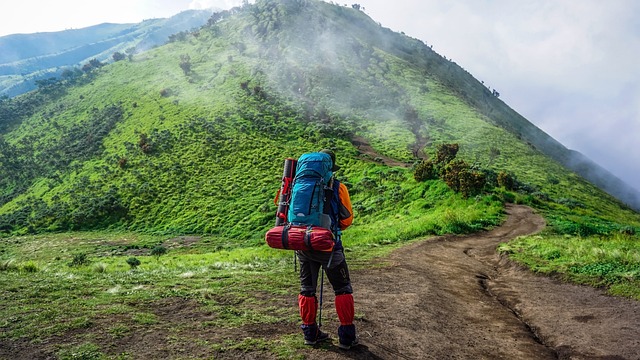Hiking is a popular outdoor activity enjoyed by millions of people around the world. Whether you’re a seasoned backpacker or a beginner, having the right gear is essential for a successful and enjoyable trip. One of the most important pieces of gear for any hiking adventure is a backpack. But can a hiking backpack be used as a carry-on for air travel?
Whether a hiking backpack can be used as a carry-on largely depends on its size and the airline’s policies. Generally, most hiking backpacks are too large to fit as a carry-on and will need to be checked in as luggage.
To be sure, you should check the dimensions and weight restrictions of your backpack, and compare them with the airline’s carry-on size limits. If your backpack meets the requirements, then you may be able to use it as a carry-on.
In this article, I’ll explore the rules and regulations for carry-on luggage, examine the factors that determine whether a hiking backpack can be used as a carry-on, and provide tips for using a hiking backpack as a carry-on. By the end of this article, you’ll have a better understanding of what you need to know to travel with your hiking backpack. Let’s dive in!
Airline Regulations on Carry-on Luggage
Before I dive into the specifics of using a hiking backpack as a carry-on, it’s important to understand the regulations set by airlines for carry-on luggage. These regulations vary depending on the airline, but there are some general guidelines that most airlines follow.
Firstly, airlines have specific dimensions and weight restrictions for carry-on bags. These restrictions are in place to ensure that the bags fit in the overhead bins or under the seats on the plane. Generally, the maximum dimensions for a carry-on bag are 22 x 14 x 9 inches (56 x 36 x 23 cm), and the maximum weight is 40 pounds (18 kg). However, it’s always a good idea to check with your airline to confirm their specific regulations.
In addition to size and weight restrictions, airlines also have rules about what types of items are allowed and prohibited in carry-on bags. Generally, items that are not allowed in carry-on bags include liquids over 3.4 ounces (100 milliliters), sharp objects, and firearms. It’s important to check with your airline to ensure that you’re not packing any prohibited items.
Finally, there are some exceptions to the rules for carry-on bags. For example, some airlines may allow a small personal item in addition to a carry-on bag, such as a purse or laptop bag. Additionally, some airlines may have different rules for international flights. It’s always a good idea to check with your airline before your trip to ensure that you’re following all of their regulations for carry-on luggage.
Hiking Backpacks as Carry-on Luggage
Now that we understand the regulations for carry-on luggage, let’s explore whether a hiking backpack can be used as a carry-on. The answer to this question depends on a few factors.
Firstly, the size and capacity of the backpack are important. If the backpack is within the airline’s size restrictions for carry-on luggage, then it can be used as a carry-on. However, if the backpack is too large, it will need to be checked in.
Secondly, the weight of the backpack is also important. Most airlines have a maximum weight limit of 40 pounds for carry-on luggage, so if the backpack is too heavy, it may need to be checked in.
Finally, the frame and structure of the backpack are important to consider. If the backpack has a rigid frame or bulky pockets that make it difficult to fit in the overhead bin, it may not be suitable for use as a carry-on.
It’s important to note that not all hiking backpacks are suitable for use as a carry-on. Some backpacks are simply too large or heavy to meet airline regulations. It’s always a good idea to check with your airline before your trip to confirm their regulations for carry-on luggage and to ensure that your backpack meets their requirements.
Benefits and Drawbacks of Using a Hiking Backpack as a Carry-on
There are both benefits and drawbacks to using a hiking backpack as a carry-on for air travel. Here are a few to consider:
Benefits:
- Cost savings: Checking in a bag can come with additional fees, so using your hiking backpack as a carry-on can save you money.
- Convenience: Carrying your backpack on the plane means you won’t have to wait at baggage claim or worry about your luggage being lost or damaged.
- Security: Keeping your backpack with you on the plane means you’ll have better control over your belongings, reducing the risk of theft or loss.
Drawbacks:
- Limited space: Hiking backpacks can be bulky and take up a lot of space in the overhead bin, which can be a problem on crowded flights.
- Weight restrictions: Most airlines have a weight limit for carry-on bags, so if your backpack is heavy, you may have to check it in.
- Compatibility with airport security regulations: Hiking backpacks can have lots of pockets and compartments, which can make them difficult to pass through security checkpoints.
Overall, using a hiking backpack as a carry-on can be a great option if you’re looking to save money and travel with greater convenience and security. However, it’s important to be aware of the potential drawbacks and to make sure your backpack meets the airline’s regulations before your trip.
Tips for Using a Hiking Backpack as a Carry-on
If you’ve decided to use your hiking backpack as a carry-on for your upcoming trip, here are 4 tips to help you make the most of the limited space and ensure a hassle-free travel experience:
- Choose the right backpack: Not all hiking backpacks are suitable for use as a carry-on. Look for backpacks that are within the airline’s size and weight restrictions and have a frame that is flexible enough to fit into the overhead bin. Backpacks with detachable daypacks can also be a good option, as they give you an additional bag for personal items without taking up additional space in the overhead bin.
- Pack strategically: When packing your backpack, be mindful of the weight restrictions and try to pack as lightly as possible. Roll your clothes to save space, and use packing cubes or compression bags to make the most of the available space. Make sure to place any liquids in a clear, plastic bag and pack them separately from the rest of your belongings to comply with airport security regulations.
- Be prepared for security: When going through security, be prepared to remove your backpack and place it in a separate bin for screening. To make this process easier, keep your electronics, liquids, and any other items that need to be removed in a separate compartment of your backpack for easy access.
- Know your airline’s policies: Make sure to check your airline’s policies on carry-on luggage and any additional fees or restrictions. Some airlines have different policies for international flights, so make sure to check if you’re traveling abroad.
Conclusion
In conclusion, using a hiking backpack as a carry-on for air travel can be a great option for those looking to save money and travel with greater convenience and security. However, it’s important to be aware of the regulations set by airlines for carry-on luggage, as well as the size, weight, and structure of your backpack to ensure it’s suitable for use as a carry-on.
By choosing the right backpack, packing strategically, being prepared for security, and knowing your airline’s policies, you can make the most of the limited space and enjoy a hassle-free travel experience with your hiking backpack as a carry-on. Remember to always check with your airline before your trip to confirm their regulations for carry-on luggage and to ensure that your backpack meets their requirements.
You should read this related article: Can You Bring A Trekking Pole On The Plane?




